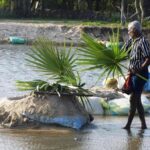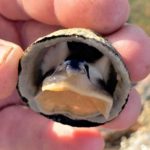Edible shipworms, in this case Bactronophorus thoracites, are also known as Naked clams, Priyang talay (เพรียงทะเล), and various other common names throughout the region where they occur. They bore into wood immersed in salt water and are a major hassle for wooden ships, piers, and docks.
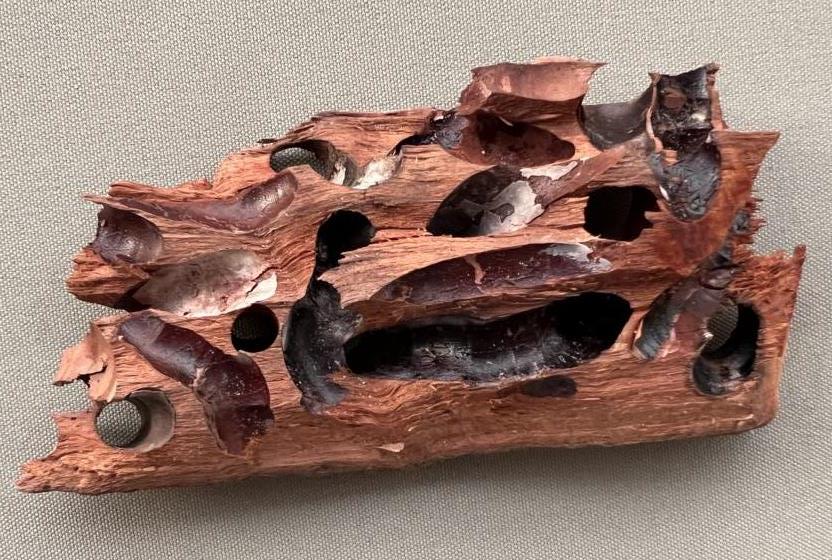
Besides their habit of boring into wood, they are well-liked to be eaten by most Indigenous people within their distribution range in the Asia-Pacific, especially in Southeast Asia.
What are shipworms?
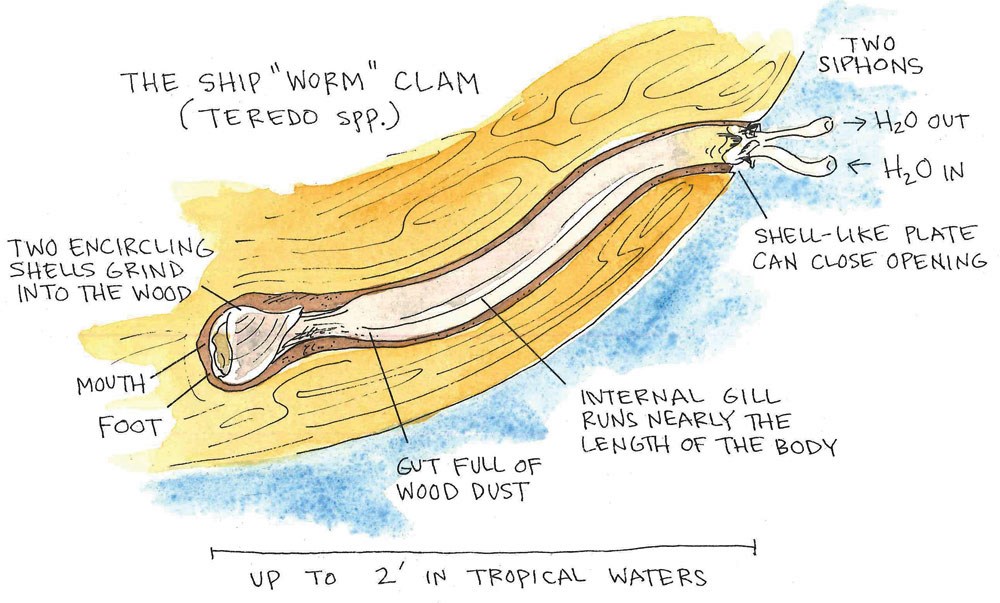
Shipworms belong to the phylum Mollusca and the class Bivalvia. Their two small shells only circumvent their anterior end and are used to rasp away wood.
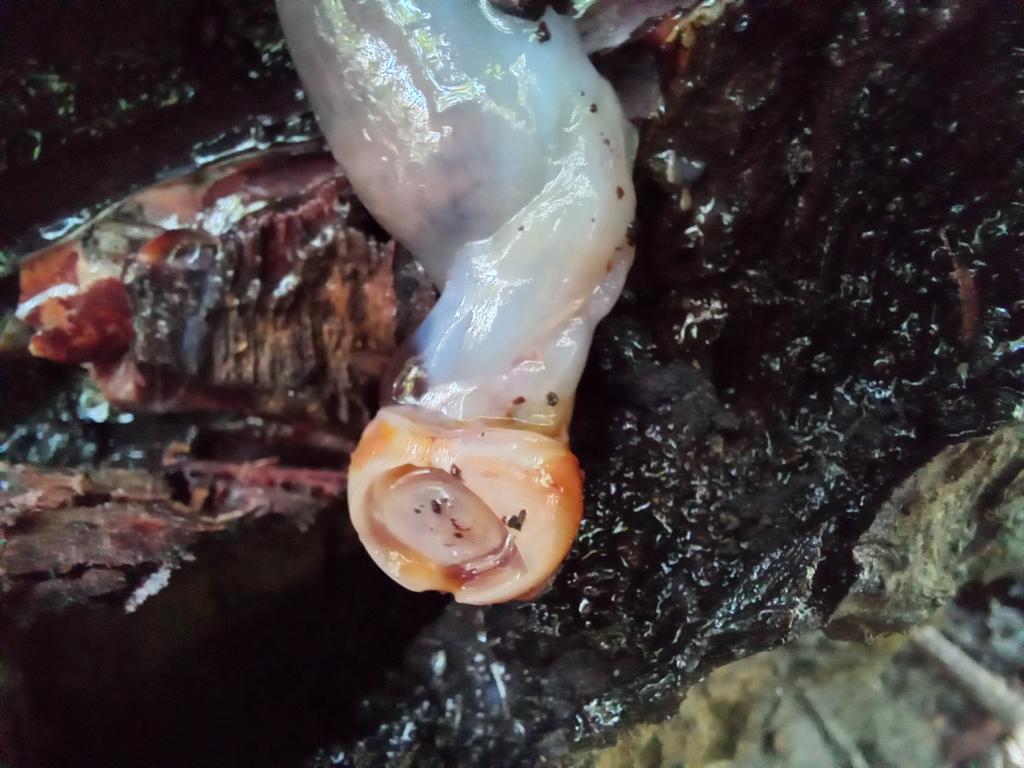
Their main body can grow to about 60 cm / 2 ft long and has a soft, muscular, oyster-like texture.

The ventral end shows two siphons, including two bony structures (‘pallets’) that can be used to close the burrow entrance and help determine the species.
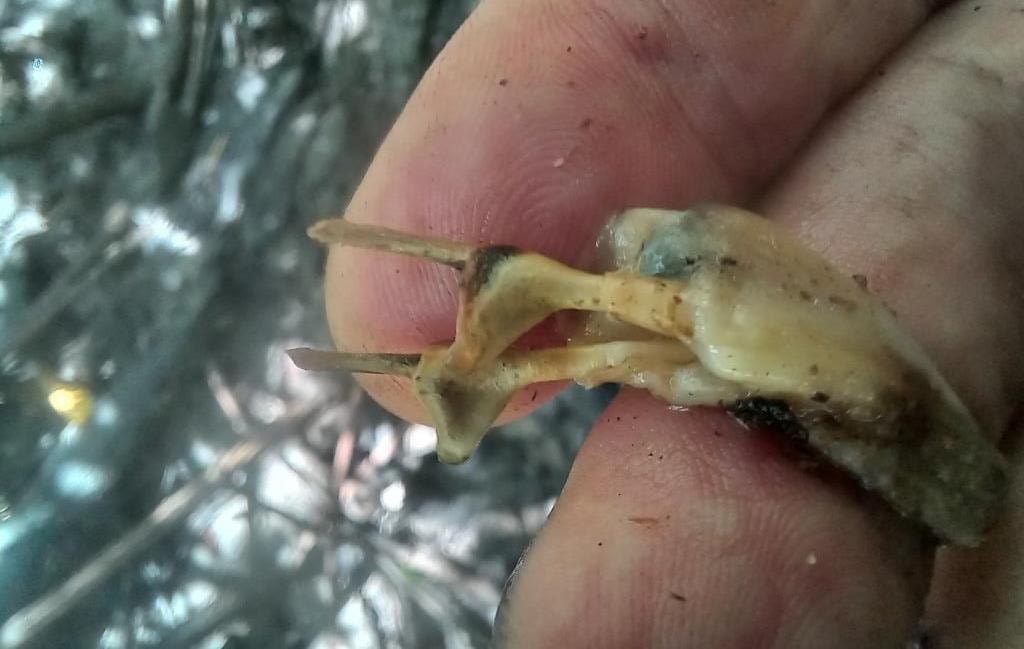
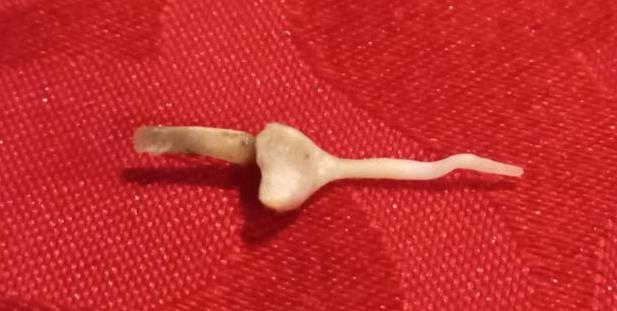
The shipworm will line the burrow with a thin calciferous layer, which protects its soft body against wood splinters. A general description of shipworms can be found on Wikipedia, and a specific description of Bactronophorus thoracites here.
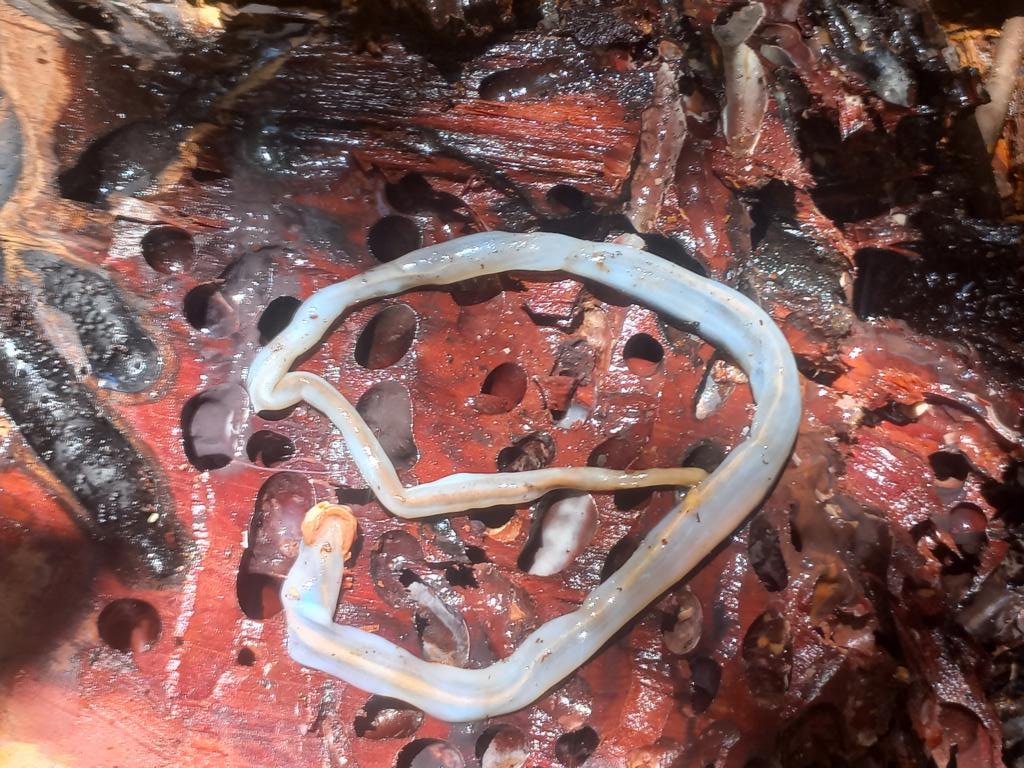
Where do we find shipworms?
Edible shipworms Bactronophorus thoracites can be found throughout Asia-Pacific.
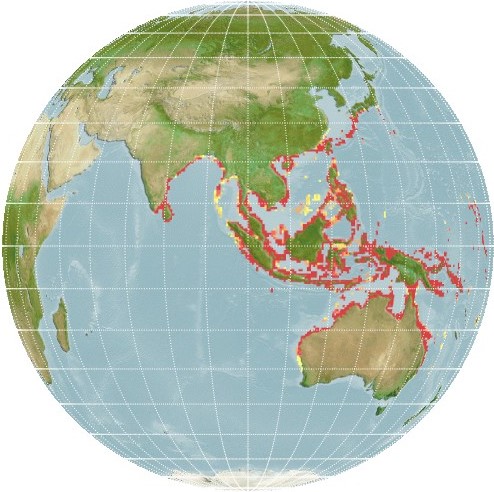
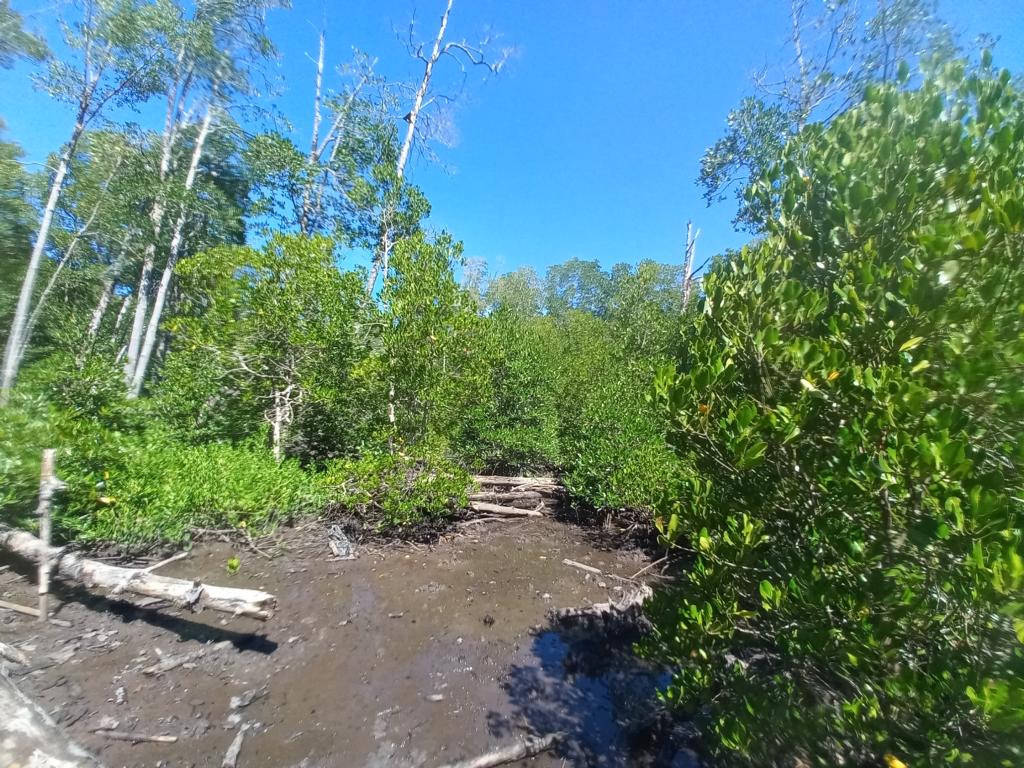
We were catching them in a mangrove forest on Koh Lanta in Thailand and found them live and active in the roots and stems of Rhizophora sp. and Avicennia sp. mangroves.
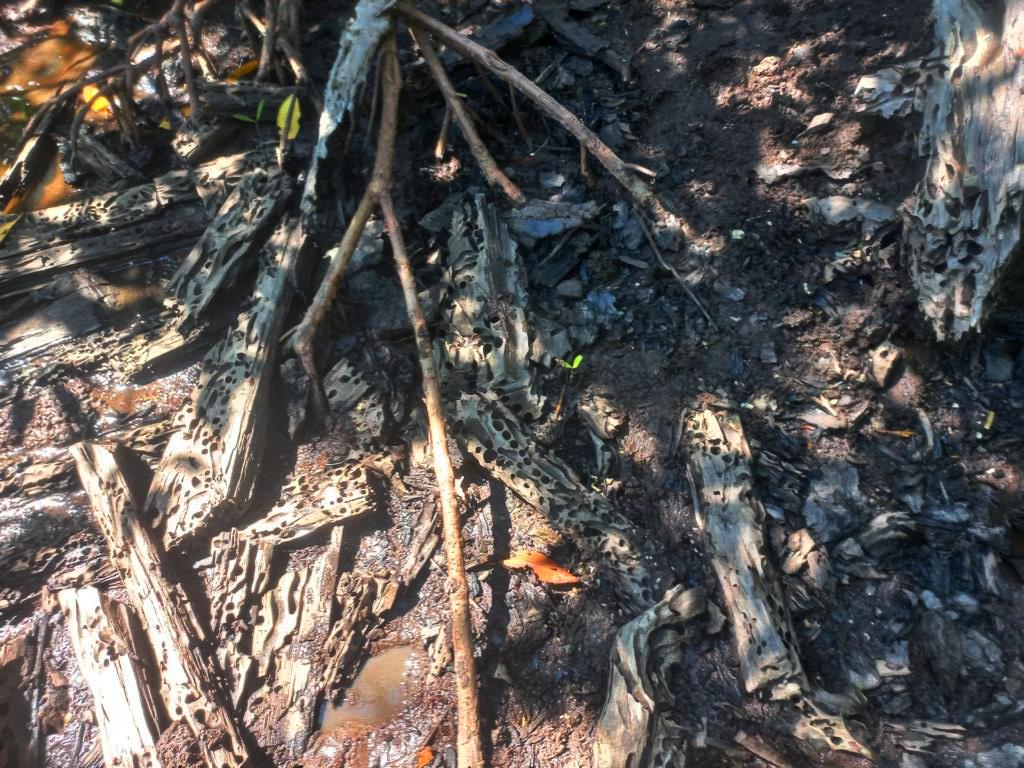
How to harvest them?
We were looking for thick, dead tree trunks of various mangrove species lying on the ground or still standing. Tree trunks on the ground were chopped into smaller pieces and then split open to extract the worms.

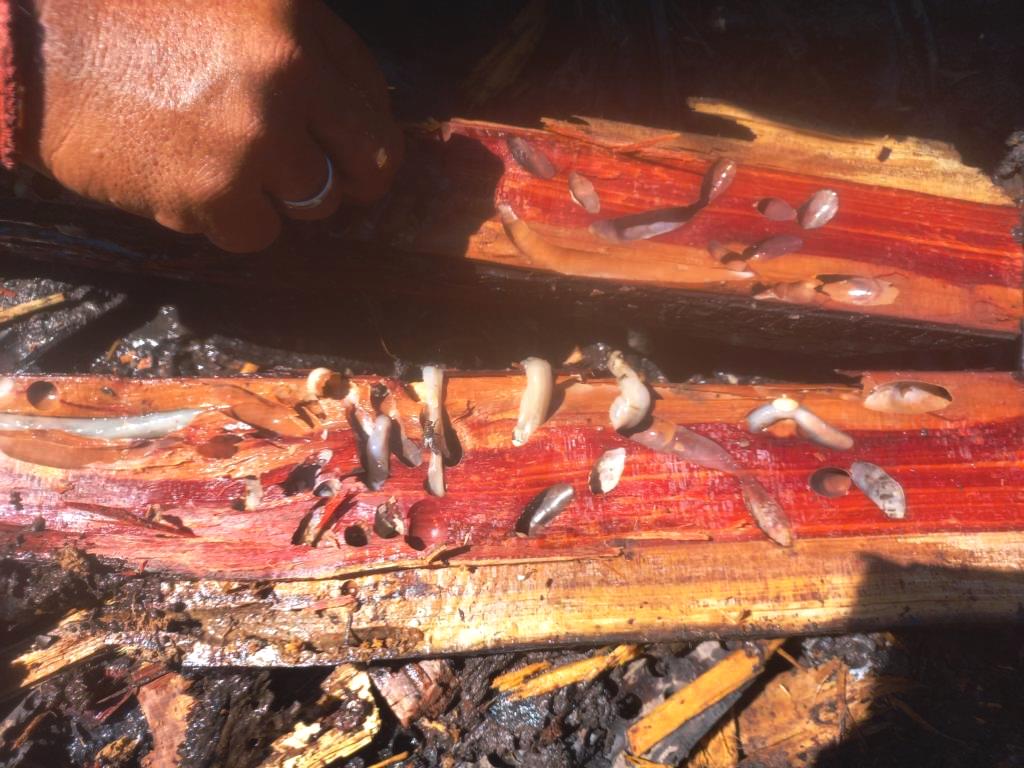
If the tree was still standing, we chopped away some wood with a heavy axe from the sides above ground level and collected the worms.
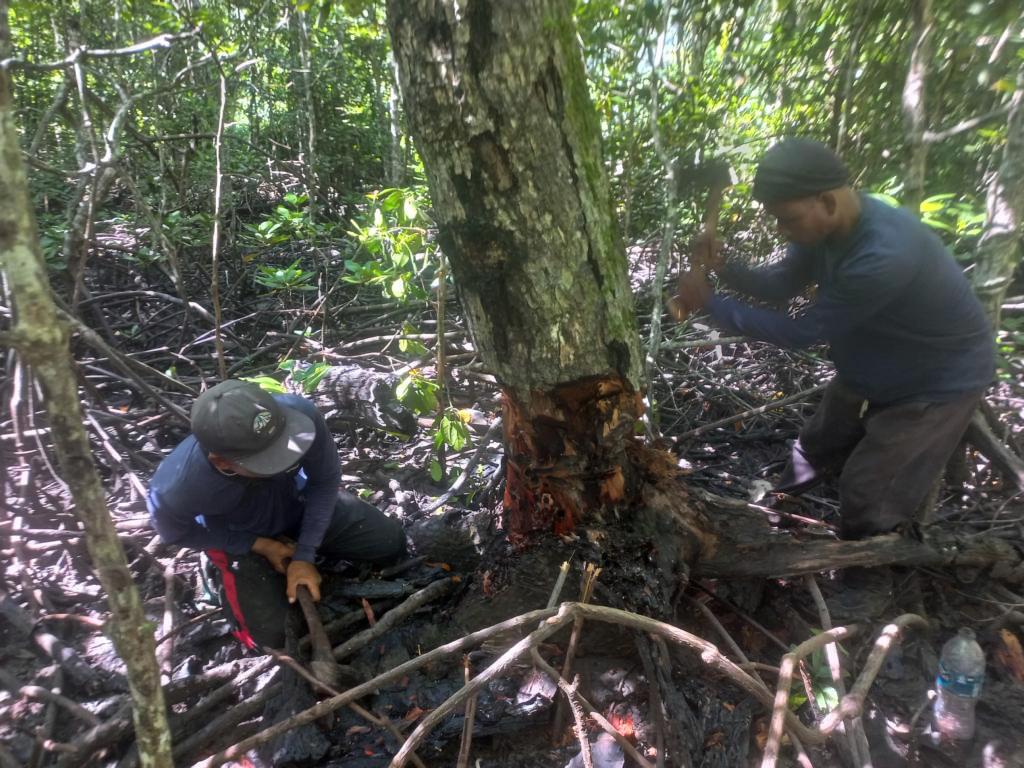
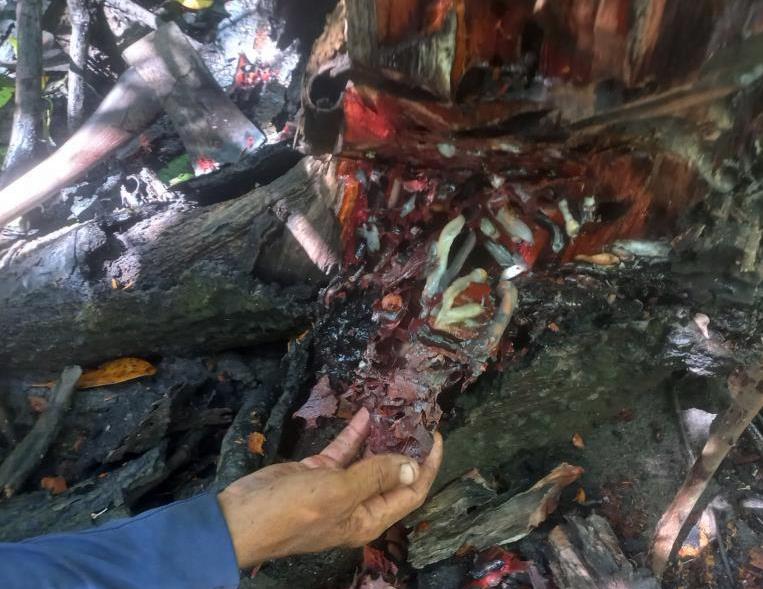
Preparation and nutritional value of shipworms.

Edible shipworms taste best when eaten fresh, directly at harvesting. Before eating them raw, they are squeezed along their whole body to remove outside mud and intestine fluids. The two shells for boring are bitten off first, and at the end, the two bony pallets remain and are also bitten off and removed. Their meat tastes salty, like an oyster, with a slightly bitter finish. And the inside of the soft and thick skin is like gooey oyster jelly.
In southern Thailand, this shipworm species is also prepared as a salad. The raw worms are mixed with fish sauce, chilies, and shallots and eaten like that.
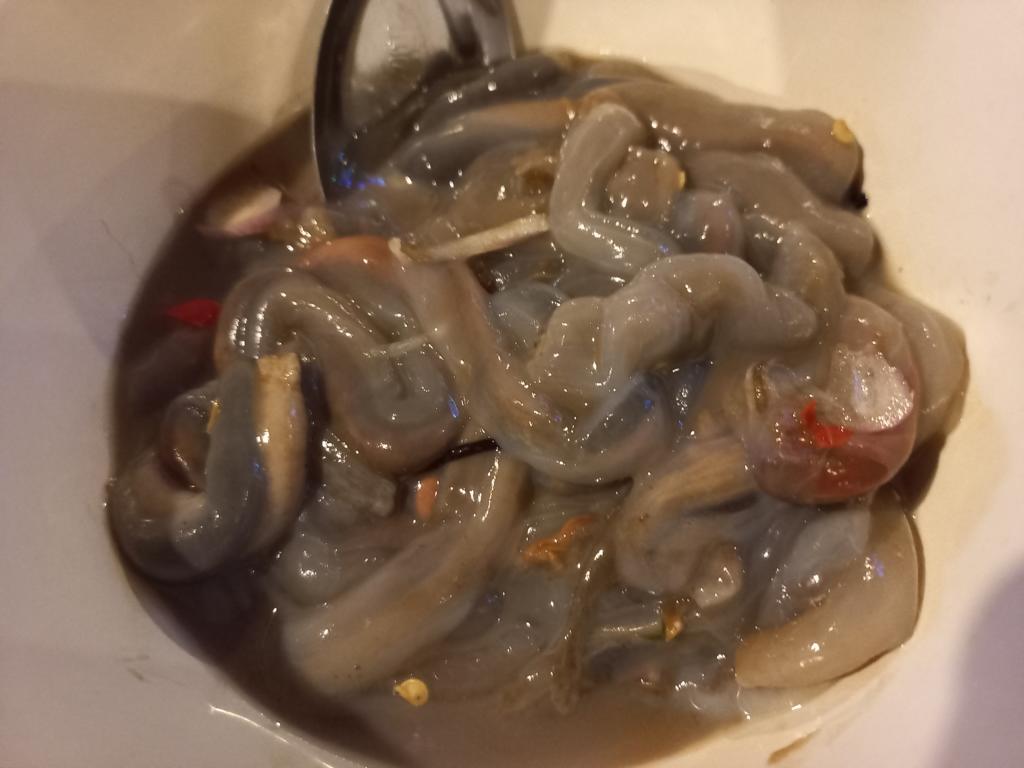
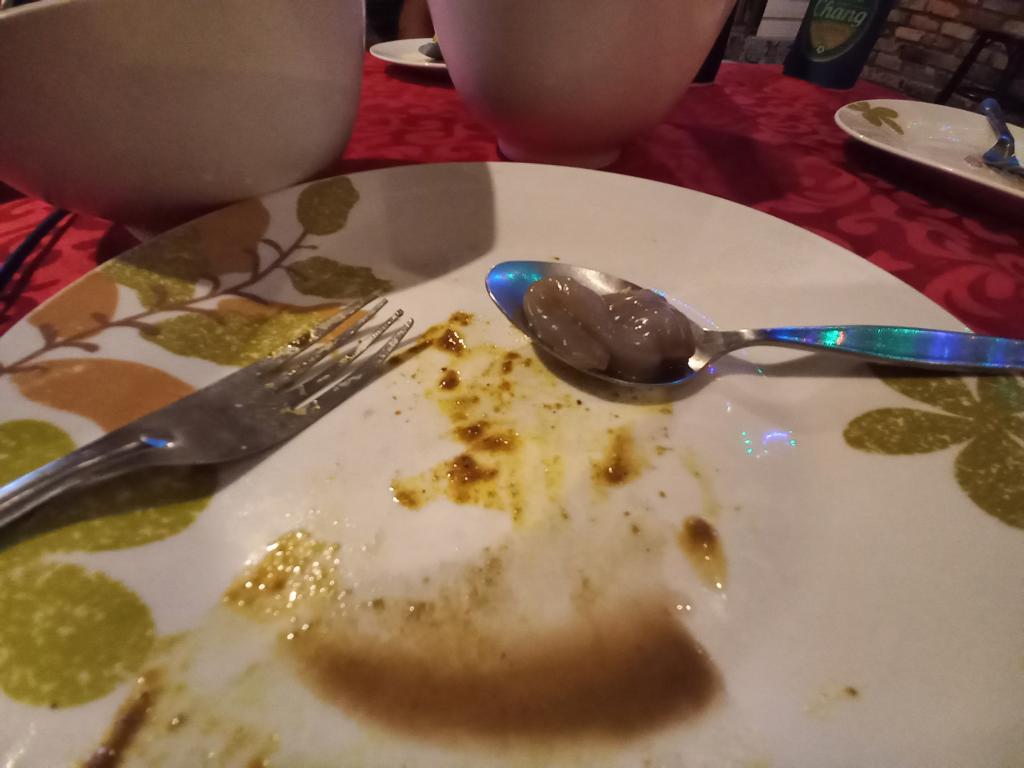
Nutritional value
For a similar species of shipworms, Teredo navalis, Yumima, S. et al., found in mangrove forests of Indonesia that the approximate content of shipworms consists of:
- Carbohydrates 44.73%,
- Protein 13.30%,
- Fat 1.06%,
- Crude fiber 0.06%
The carbohydrate- and protein content is high, whereas fat and crude fibers are low.
Lessons learned from harvesting shipworms in mangrove forests:
- Edible shipworms can be found in the dead wood of Southeast Asia’s mangrove forests.
- As the mangrove wood in which they are thriving is exceptionally hard, heavy chopping tools are needed to extract them.
- Shipworms taste delicious when eaten raw and are available in large amounts.



